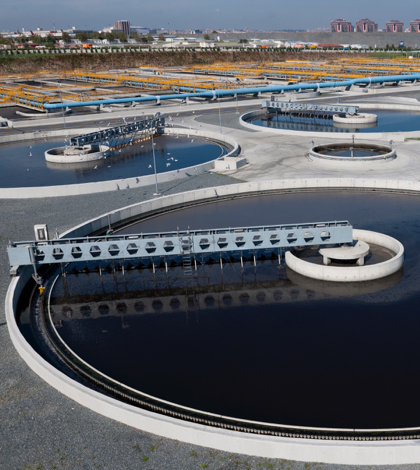Information released earlier this week have confirmed that independent test results gathered from a Stanford, California demonstration plant have been published and validate compliance of Fluence’s membrane aerated biofilm reactors (MABR) technology with California’s Title 22 water recycling legislation. (MABRs) provide an energy-efficient alternative to the activated sludge treatment that has long been used for aerobic wastewater treatment.
But the activated sludge treatment is particularly energy-intensive in its aeration stage making it cost-inefficient. Conversely, Fluence’s self-respiring MABRs provide an energy-efficient alternative based on passive aeration, that is, the diffusion of oxygen through membranes.
Fluence’s MABR demonstration plant at the Codiga Resource Recovery Center (CR2C) in Stanford, California, has been operational since January 2018. Testing was conducted on wastewater originating from Stanford’s campus raw sewage system.
Title 22 of California’s Water Recycling Criteria is among the strictest water treatment standards for water recycling and reuse in the United States. The testing parameters included criteria to evaluate reliable enhanced nutrient removal in the form of “Total Nitrogen”, which is increasingly important across the United States though it is difficult and costly to achieve through conventional wastewater treatment.
Influent from the Stanford CR2C site had a higher concentration of nitrogen and phosphorous than typical municipal wastewater due to less dilution from additional wastewater from other sources. Fluence’s MABR technology enables simultaneous nitrification and denitrification (SND) minimizing carbon deficiency and provides results of low total nitrogen in the effluent.
Preliminary findings of CR2C’s testing were previously presented at Water Environment Federation’s Annual Technical Exhibition and Conference (WEFTEC) in New Orleans in September 2018 and at a Fluence event at CR2C early this month. The Fluence MABR demonstration unit’s treatment performance was evaluated according to two benchmarks: California’s Title 22 standards for non-potable water reuse (T22); and Total Nitrogen limit of 10 mg-N/L.
CR2C published report claims that, “… the system achieved the objectives of mean Total Nitrogen concentrations below 10mg/L and met T22 requirements as measured by Turbidity and Total Coliform in the Tertiary Effluent.”
“We are proud to share these results of third-party validation of our MABR technology’s compliance with California’s Title 22 legislation,” said Fluence’s Managing Director & CEO Henry Charrabé. “Having a prominent and leading research center such as the Codiga Resource Recovery Center at Stanford evaluate our technology and find that it meets these strict guidelines is a milestone for our Company’s progress in the United States. It further bolsters our position that MABR technology is ideally suited to address the toughest wastewater challenges in the United States and around the world.”
Fluence maintains North American co-headquarters in San Francisco and New York. It’s MABR technology is already available and being sold commercially in the USA via the Aspiral™ line of Smart Products Solutions.
 California Water News Daily Your Source For Water News in California
California Water News Daily Your Source For Water News in California


